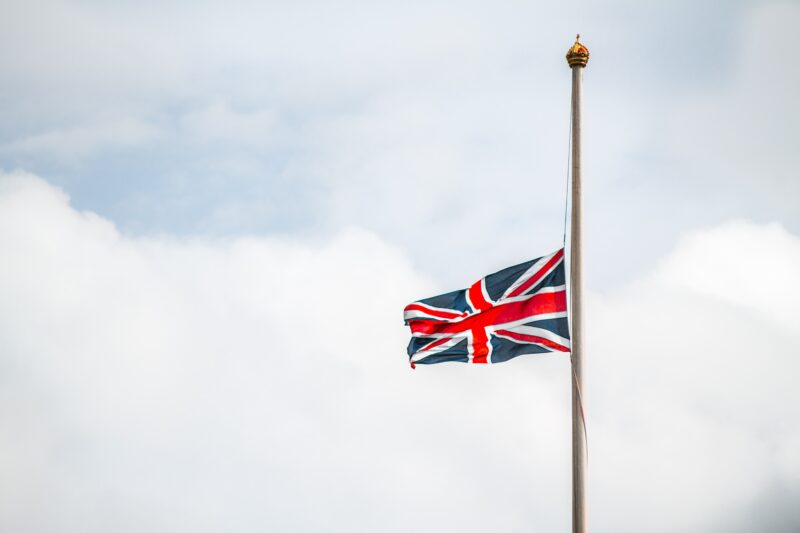Britain is solidifying its geostrategic presence in Asia through the deployment of naval vessels to the Indo-Pacific. The increase in militarization comes as China continues its imperialist gestures in the region.
The HMS Queen Elizabeth, a novel aircraft carrier, stopped in Singapore on October 11th in what is widely viewed as an attempt by Britain to reassert itself on the global stage. After a tumultuous exit from the E.U., a bungled COVID-19 response, and tribalist Americanesque domestic tensions rising, the once hegemonic nation is eager to reconstruct a narrative of sovereign power. Naval manoeuvers and fighter jet formations were practised in a joint military exercise with Singapore’s combat forces. According to Reuters, the exercise is emblematic of an Indo-Pacific tilt. Strike group commander, Commodore Steve Moorehouse commented that the U.K.’s intent is to “have an increased footprint, and much more persistent presence” in the region.
The pivot has been in the making, coming just weeks after the announcement of a triad defence pact between the U.K., U.S., and Australia – AUKUS. The prevailing concern is the growing influence of China in the Western Pacific, whose recent incursions into Taiwanese airspace and testing of an apparent hypersonic weapon have western military establishments panicking. Commenting on the recent military deal, that sees the proliferation of nuclear submarines to Australia, U.S. Ambassador to Indonesia, Sung Kim, stated “[w]e are not asking any countries, including Indonesia, to make choices between U.S. and any other country.” This appears to be a classic engagement in Orwellian doublespeak, as such moves by the U.S. and China will inevitably result in a Cold War-like filtering of nations as each hedges their bets on whose allyship is more profitable.
In fact, Singapore is only one of 40 countries the monarchist moniker-bearing aircraft carrier will interact with during its global deployment mission. The Queen Elizabeth is the “largest warship built by the British military,” according to Reuters. And it has already visited Japan and its scattered archipelago of naval bases earlier this year as it makes plans to permanently deploy two warships in the region. Japan welcomed the visit as it labelled China as its greatest national security threat in a new defence strategy paper. The largely demilitarized country has been looking warily onward at the growing dispute between Taiwan and China.
Earlier this month, China sent two waves of military aircraft, including nuclear-capable bombers, into Taiwanese controlled airspace in a move identified as “military aggression” and “damaging [to] regional peace” by Taiwan Premier, Su Tseng-chang. In addition to this, reports within the past week have revealed the potential usage of hypersonic weapons by the Chinese military, which is accused of testing a weapon that flew through space and around the globe before narrowly missing its target. Such testing is, of course, ominous. Yet, it is not unique to China, as both the U.S. and Russia have tested hypersonic weapons in the past. The real issue for AUKUS members is that such weapons may now be in the hands of the world’s new superpower.
When assessing growing geopolitical tensions between traditional world powers and emerging ones, it’s important to note that each power, at one time, was emergent. Now that the U.S. has somewhat stably established its militaristic grasp on much of the world, it is threatened by the prospect of a new Cold War. This time, however, with a modern Sovietism bereft of stringent Leninist doctrine and chronic economic shortages yet equally as authoritarian at home. Indeed, China’s current position on the global stage is much less precarious than that of the USSR’s in, say, the 70s and 80s. Hence, the fluster among the Pentagon’s top brass and U.S. war-hawks.
Ultimately, if Britain is attempting to stay relevant by matching the PCR’s number of aircraft carriers, it is certainly doing so. However, immense caution must be exercised when sending military vehicles into shared trade routes. From my view, it appears that both sides are too willing to escalate pressure upon one another. Yet, much like tectonic plates, that pressure can only build for so long before releasing, with cataclysmic consequences.
AUKUS posturing and deliberate Chinese aggravation tactics with Taiwan are on a perpendicular trajectory of collision. When did ‘diplomacy’ become such a dirty word? When did flexing military muscles become more popular than negotiating over geographic and economic discrepancies? Under the Trump administration, engagement with China was undoubtedly tense, but before COVID-19, both sides were immersed in trade and property discussions. The Biden and Johnson administrations would do well to revive these talks and to float the idea of a summit. While not as likely to induce raucous rally applause, it is certainly the safer course of action amid these troubling times.
- Poland’s Migrants Face Cold Winter as Crisis Escalates - November 9, 2021
- The Russia-NATO Split, Explained - October 29, 2021
- Britain Reaffirms Asia ‘Tilt’ As China Flexes - October 22, 2021


